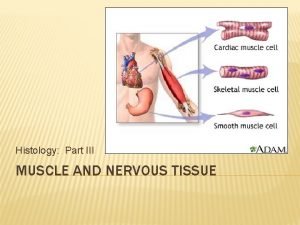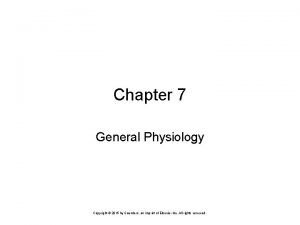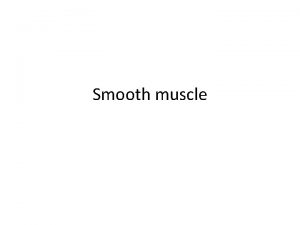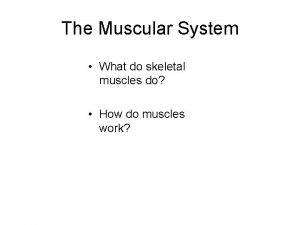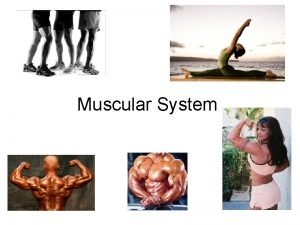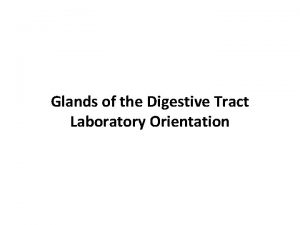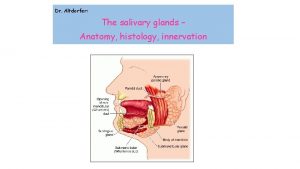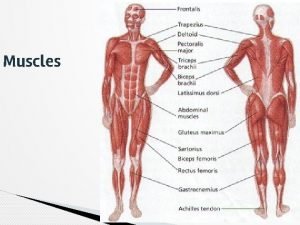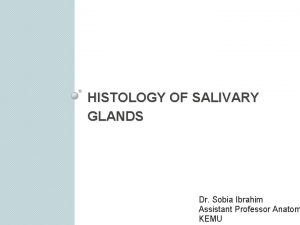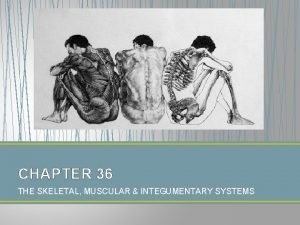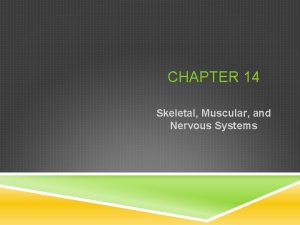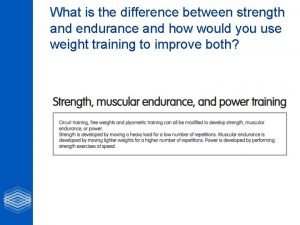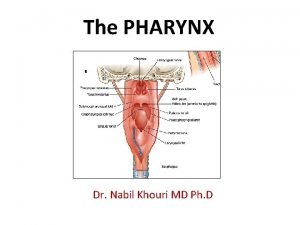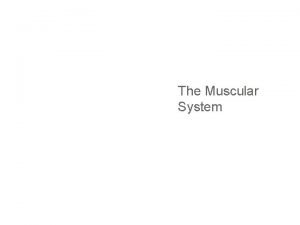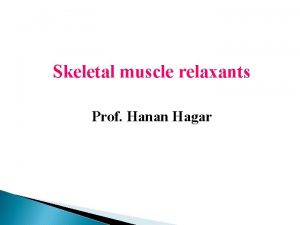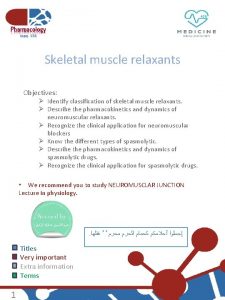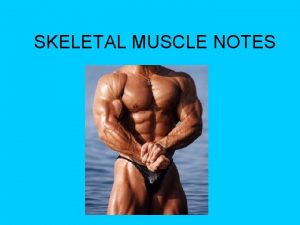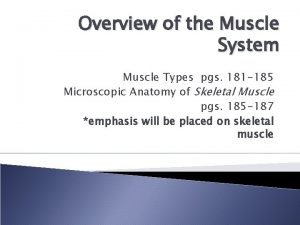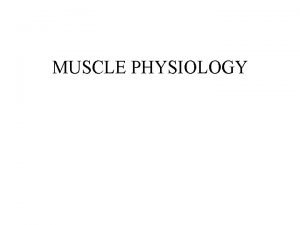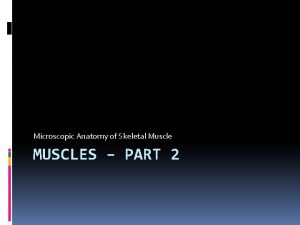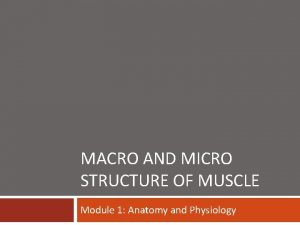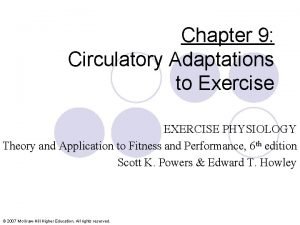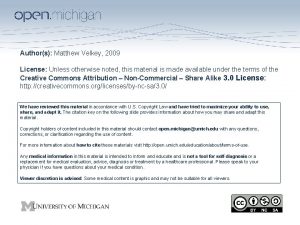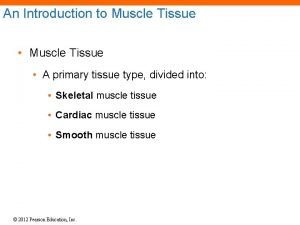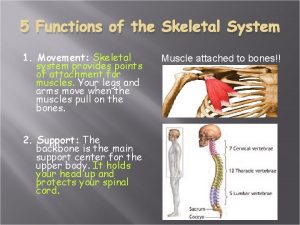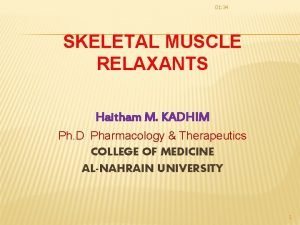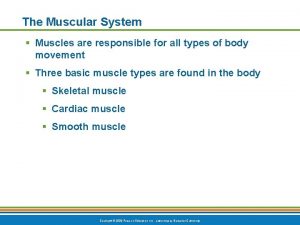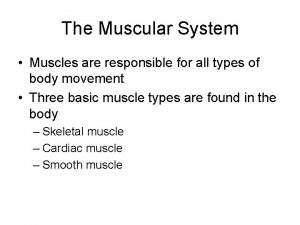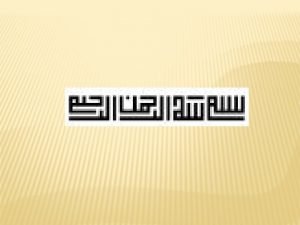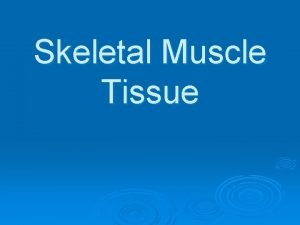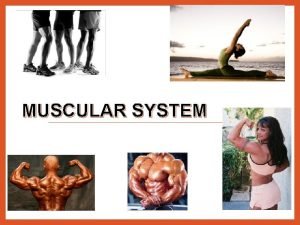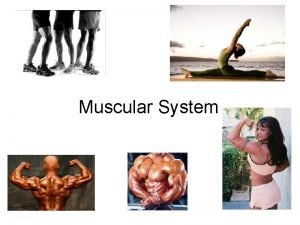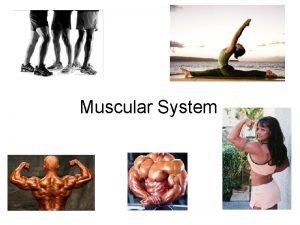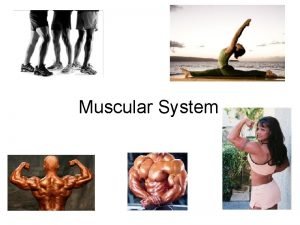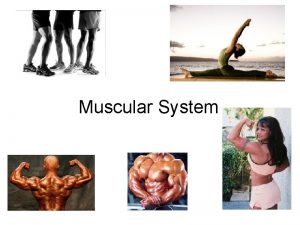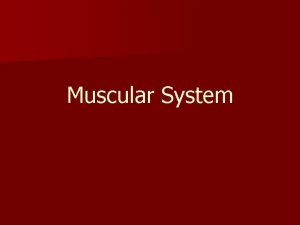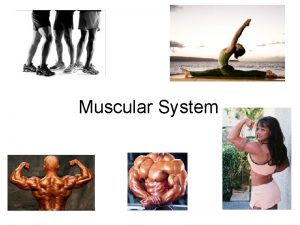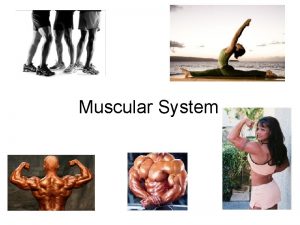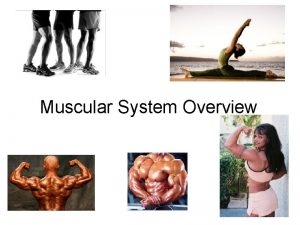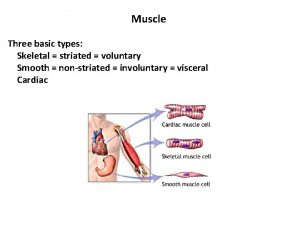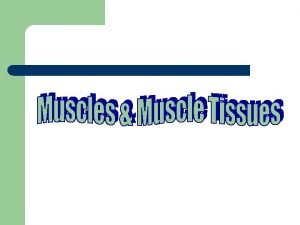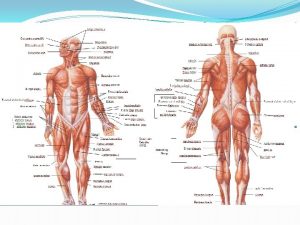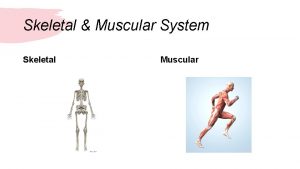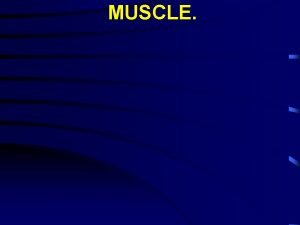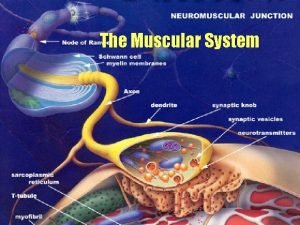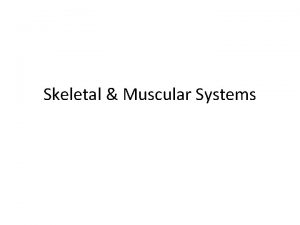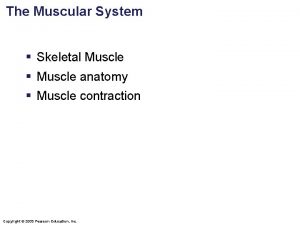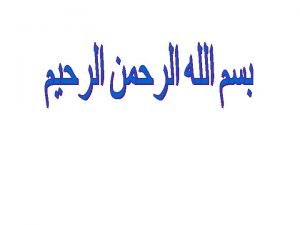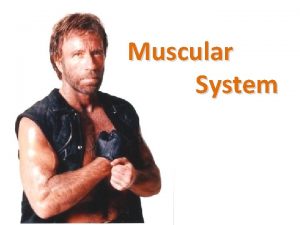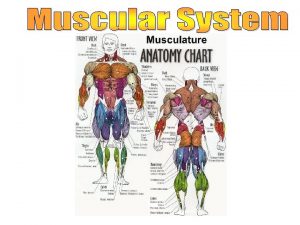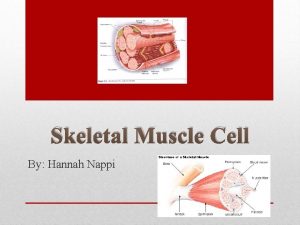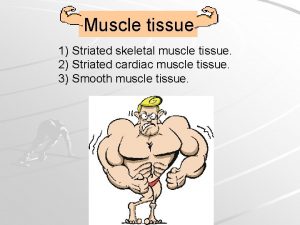Muscular System Types of Muscle Skeletal striated voluntary





































- Slides: 37

Muscular System

Types of Muscle ●Skeletal – striated & voluntary ●Smooth – involuntary ●Cardiac - heart The word “striated” means striped. Skeletal muscle appears striped under a microscope.

Muscles and Muscle Fiber Structure Muscles are composed of many FIBERS that are arranged in bundles called FASCICLES

Individual muscles are separated by FASCIA, which also forms tendons

EPIMYSIUM = outermost layer, surrounds entire muscle. PERIMYSIUM = separates and surrounds fascicles (bundles of muscle fibers) ENDOMYSIUM = surrounds each individual muscle fiber This model of the muscles uses straws to represent fibers. Green = endomysium Yellow = perimysium Blue = epimysium

Muscle Layers Muscle Fiber Endomysium Perimysium Epimysium

Epimysium Perimysium Endomysium

Muscles / Cells Sarcolemma = muscle fiber membrane Sarcoplasm = inner material surrounding fibers (like cytoplasm) Sarcoplasmic Reticulum - transport Myofibrils = individual muscle fibers, made of myofilaments

Nucleus Sarcolemma Mitochondrion Sarcoplasm Myofibril

Myofibrils are made of ACTIN = thin filaments MYOSIN = thick filaments

Myofilaments ACTIN (thin) and MYOSIN (thick) -- form dark and light bands § A band = d. Ark • thick (myosin) § I band = l. Ight • th. In (actin)




It is important to remember the hierarchy fasicles myofibrils myofilaments actin myosin

How Muscles Work with the Nervous System

NEUROMUSCULAR JUNCTION - where a nerve and muscle fiber come together MOTOR END PLATE - folded area where muscle and neuron communicate SYNAPTIC CLEFT - gap between the neuron and motor end plate SYNAPTIC VESICLES - where neurotransmitters are stored *these are released into the cleft and tell the muscle to contract

Motor Unit or Neuromuscular Junction 1. Neuron 3. Vesicle 2. Sarcolemma (or motor end plate) 4. Synapse 5. Mitochondria

The neurotransmitter that cross the gap is ACETYLCHOLINE ACH is broken down by CHOLINESTERASE

The neurotransmitter that crosses the gap is ACETYLCHOLINE. This is what activates the muscle. Acetylcholine is stored in vesicles


SLIDING FILAMENT THEORY (MODEL) The theory of how muscle contracts is the sliding filament theory. The contraction of a muscle occurs as the thin filament slide past the thick filaments. What is needed: ATP Calcium Myosin & Actin Acetylcholine Cholinesterase

Sliding Filament Handout (additional)


Energy Source -ATP is produced by CELLULAR RESPIRATION which occurs in the mitochondria -Creatine phosphate increases regeneration of ATP * Only 25% of energy produced during cellular respiration is used in metabolic processes - the rest is in the form of HEAT. - maintains body temperature.

Why might products like pro-creatine claim to increase energy? ATP = adenosine triphosphate ADP = adenosine diphosphate

Other Terms ● 1. Threshold Stimulus ● 2. All-or-None Response ● 3. Motor Unit ● 5. Recruitment ● 6. Muscle Tone ● 7. Muscular Hypertrophy ● 8. Muscular Atrophy ● 9. Muscle Fatigue ● 10. Muscle Cramp ● 11. Oxygen Debt

1. Threshold Stimulus Minimal strength required to cause a contraction Motor neuron releases enough acetylcholine to reach threshold 2. All-or-None Response Fibers do not contract partially, they either do or don't

3. Motor Unit The muscle fiber + the motor neuron 4. Recruitment more and more fibers contract as the intensity of the stimulus increases 5. Muscle Tone Sustained contraction of individual fibers, even when muscle is at rest


6. Hypertrophy - muscles enlarge (working out or certain disorders) 7. Atrophy - muscles become small and weak due to disuse

8. Muscle Fatigue - muscle loses ability to contract after prolonged exercise or strain 9. Muscle Cramp - a sustained involuntary contraction 10. Oxygen Debt oxygen is used to create ATP, -- not have enough oxygen causes Lactic Acid to accumulate in the muscles → Soreness - *See Magic School Bus

11. Origin and Insertion Origin = the immovable end of the muscle Insertion = the movable end of the muscle The biceps brachii has two origins (or two heads).

What is rigor mortis? A few hours after a person or animal dies, the joints of the body stiffen and become locked in place. This stiffening is called rigor mortis. Depending on temperature and other conditions, rigor mortis lasts approximately 72 hours. The phenomenon is caused by the skeletal muscles partially contracting. The muscles are unable to relax, so the joints become fixed in place.

What is tetanus? Tetanus causes cholinosterase to not break down the acetylcholine in the synapse. This results in a person's muscles contracting and not relaxing. A tetanus shot must be administered shortly after exposure to the bacteria. Once you develop tetanus, there is no cure.


 Motor unit
Motor unit Muscle
Muscle Which muscle is striated in appearance but resembles smooth
Which muscle is striated in appearance but resembles smooth Pic of smooth muscle
Pic of smooth muscle Major skeletal muscles
Major skeletal muscles Skeletal and muscular system
Skeletal and muscular system Direct voluntary act example
Direct voluntary act example Autonomic nervous system skeletal muscle
Autonomic nervous system skeletal muscle Tecido muscular
Tecido muscular Portal triad orientation
Portal triad orientation Parotid gland relations
Parotid gland relations Striated triceps
Striated triceps Salivary gland histology
Salivary gland histology Chapter 36 skeletal muscular and integumentary systems
Chapter 36 skeletal muscular and integumentary systems Chapter 14 skeletal muscular and nervous systems
Chapter 14 skeletal muscular and nervous systems Differentiate muscular strength from muscular endurance
Differentiate muscular strength from muscular endurance Pharynx layers
Pharynx layers The five golden rules of skeletal muscle activity
The five golden rules of skeletal muscle activity Centrally acting skeletal muscle relaxants
Centrally acting skeletal muscle relaxants Dantrolene
Dantrolene Classification of skeletal muscle relaxant
Classification of skeletal muscle relaxant Skeletal muscle relaxants classification
Skeletal muscle relaxants classification Skeletal muscle crash course
Skeletal muscle crash course Comparison of skeletal cardiac and smooth muscle
Comparison of skeletal cardiac and smooth muscle Skeletal muscle relaxants classification
Skeletal muscle relaxants classification Characteristics of skeletal smooth and cardiac muscle
Characteristics of skeletal smooth and cardiac muscle Microscopic anatomy of skeletal muscle
Microscopic anatomy of skeletal muscle Muscle cell structure
Muscle cell structure Skeletal muscle organisation
Skeletal muscle organisation Skeletal muscle pump
Skeletal muscle pump Spleen histology slide labeled
Spleen histology slide labeled Skeletal muscle contraction steps
Skeletal muscle contraction steps 5 functions of the skeleton
5 functions of the skeleton Skeletal muscle relaxants classification
Skeletal muscle relaxants classification Microscopic anatomy of skeletal muscle figure 6-2
Microscopic anatomy of skeletal muscle figure 6-2 Chapter 6 the muscular system figure 6-9
Chapter 6 the muscular system figure 6-9 Nerve supply to muscles
Nerve supply to muscles Skeletal muscle belly
Skeletal muscle belly

